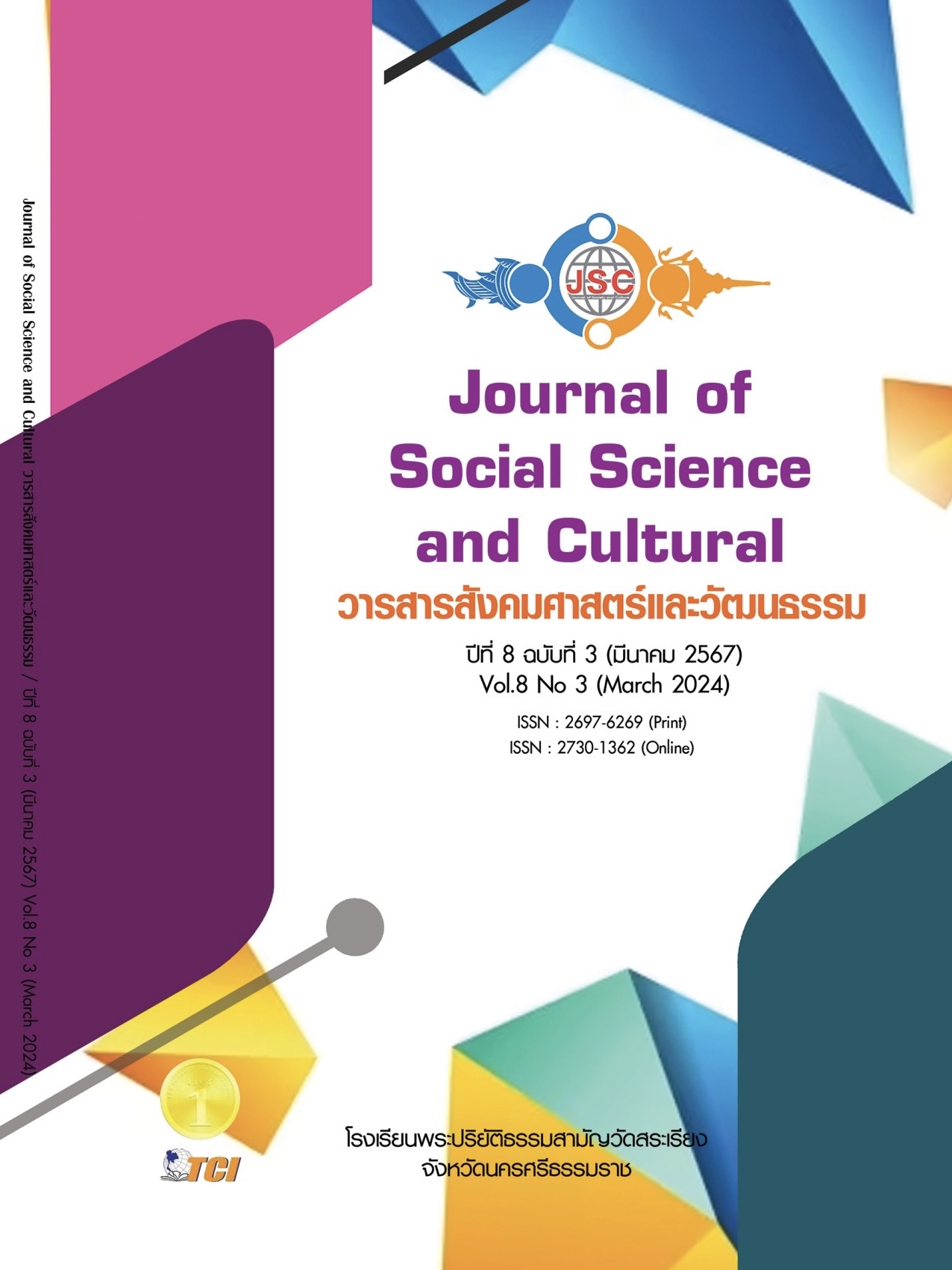AFTERLIFE IN POETRY OF KANTI NA SATTHA
Main Article Content
Abstract
This research article aims to study the afterlife in Kanti Na Sattha's poetry using the concept of afterlife from a philosophical perspective and the concept of life after death according to Buddhist principles by studying four volumes of Kanti Na Sattha's poetry betwenn 1995-2007: Growing Old Alone, Notes from Suan Mokkh, Where the Mountains Break Through the Clouds and Reports From the Village. The results of the research found that the afterlife in Kanti Na Sattha's poetry can be divided into three categories. The first is the afterlife of the immortal soul which is consistent with the spiritualist philosophical view on the immortality of the soul which is the true life that does not decay through the body and can exist in both the human world and the spiritual world, including 1) the immortal life of the soul in the human world and 2) the immortal life of the soul in the spiritual world. The second is Life after death with rebirth which is consistent with the Buddhist view of rebirth and the law of karma, including 1) rebirth in the human world 2) rebirth in another world and the third is the liberation from the cycle of birth and death (Nirvana) which is consistent with the Buddhist view of the ultimate goal of life. From the study it can be seen that Kanti Na Sattha aims to present the truth of life, the relationship and balance between human life and nature and the principles of Buddhist teachings thought the poetry that can help people in society follow the correct path of life to live happily, and sees the value of the highest goal of life according to Buddhist principles, which is Nirvana. It is seen as important literature that advances knowledge and comprehension of the reality of afterlife.
Article Details
References
กานติ ณ ศรัทธา. (2541). แก่ขึ้นตามลำพัง. (พิมพ์ครั้งที่ 2). กรุงเทพมหานคร: ต้นอ้อ.
กานติ ณ ศรัทธา. (2547). ที่ซึ่งขุนเขาทะลุเมฆ. (พิมพ์ครั้งที่ 2). กรุงเทพมหานคร: สยามอินเตอร์บุ๊คส์.
กานติ ณ ศรัทธา. (2548). หมายเหตุจากสวนโมกข์. (พิมพ์ครั้งที่ 2). กรุงเทพมหานคร: ใบไม้ผลิ.
กานติ ณ ศรัทธา. (2550). รายงานจากหมู่บ้าน. กรุงเทพมหานคร: ใบไม้ผลิ.
พระพรหมคุณาภรณ์ (ป. อ. ปยุตฺโต). (2552). พุทธธรรม. (พิมพ์ครั้งที่ 19). กรุงเทพมหานคร: บริษัท สหธรรมิก จำกัด .
พระพรหมคุณาภรณ์ (ป. อ. ปยุตฺโต). (2555). ประโยชน์สูงสุดของชีวิตนี้. (พิมพ์ครั้งที่ 4). กรุงเทพมหานคร: บริษัท อมรินทร์พริ้นติ้งแอนด์พับลิชชิ่ง จำกัด (มหาชน).
พระมหารบ ธมฺมธโร (หิรัญชาติ). (2547). มโนทัศน์เกี่ยวกับความตายในพระพุทธศาสนา : การศึกษาเชิงวิเคราะห์. ใน วิทยานิพนธ์ศาสนศาสตรมหาบัณฑิต สาขาวิชาพุทธศาสนาและปรัชญา. มหาวิทยาลัยมหามกุฏราชวิทยาลัย.
ฟื้น ดอกบัว. (2557). แนวความคิดเกี่ยวกับสังสารวัฏ: การเวียนว่ายตายเกิดในพระพุทธศาสนา. กรุงเทพมหานคร: ศยาม.
วรรณวิสาข์ ไชยโย. (2563). ทัศนคติที่มีต่อความหมายของชีวิตและความตายของวัยรุ่น. ใน งานประชุมวิชาการระดับชาติ ครั้งที่ 12 . มหาวิทยาลัยราชภัฏนครปฐม.
วรัชยา เลี่ยวเทียนไชย. (2564). ช้างบิน และ กล่องตุ๊กตาใสกับจดหมายของพ่อ: ความตายในวรรณกรรมเยาวชนรางวัลแว่นแก้ว. วารสารไทยศึกษา, 17(2), 127-150.


